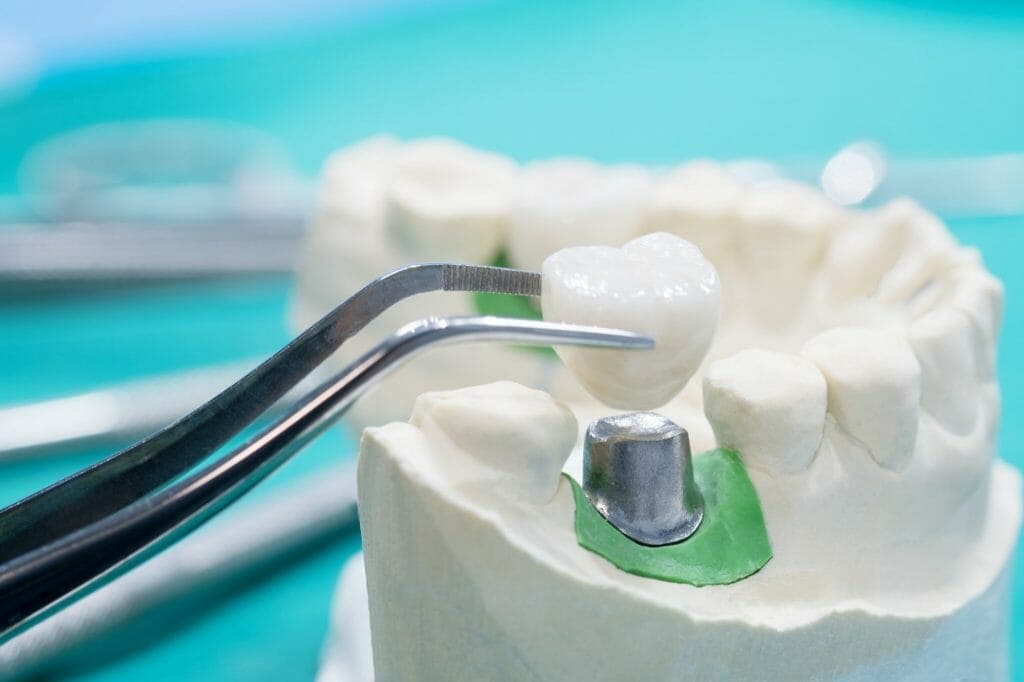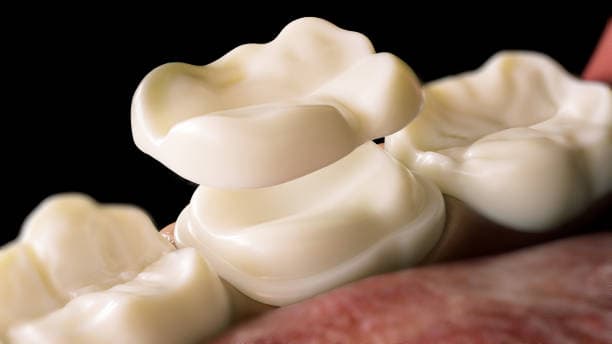A dental crown and a cap essentially refer to the same thing: a protective covering placed over a damaged or decayed tooth to restore its shape, size, strength, and appearance. The terms are often used interchangeably, but "crown" is the more commonly used term in professional dental practice, while "cap" is a layman's term.
What Is a Dental Crown?
A dental crown is a custom-made, protective covering placed over a damaged or decayed tooth to restore its shape, size, strength, and appearance. This restorative dental procedure is essential for preserving the functionality and aesthetics of compromised teeth. Dental crowns are commonly used in various situations, such as when a tooth is too damaged for a filling, after a root canal treatment, to protect a weak tooth from breaking, or to cover a dental implant. They are also used for cosmetic purposes, such as covering discolored or misshapen teeth.
The process of getting a dental crown typically involves two visits to the dentist. During the first visit, the dentist prepares the tooth by removing any decay and shaping it to accommodate the crown. Impressions of the tooth and surrounding teeth are then taken to create a custom-fit crown. These impressions are sent to a dental laboratory, where skilled technicians fabricate the crown to match the precise specifications and color of the patient's natural teeth. In the interim, a temporary crown is placed over the prepared tooth to protect it until the permanent crown is ready.
During the second visit, the temporary crown is removed, and the permanent crown is carefully fitted and bonded to the tooth using dental cement. The dentist ensures that the crown fits comfortably and aligns correctly with the patient's bite. Once in place, the crown functions like a natural tooth, restoring the tooth's strength and durability.
Dental crowns can be made from various materials, each offering distinct advantages. Porcelain or ceramic crowns are popular for their natural appearance and ability to blend seamlessly with the surrounding teeth. Metal crowns, such as those made from gold or silver alloys, are known for their durability and strength, making them ideal for molars that endure heavy chewing forces. Porcelain-fused-to-metal (PFM) crowns combine the aesthetics of porcelain with the strength of metal, offering a balance of appearance and durability. All-resin crowns are a more affordable option, though they may wear down more quickly over time.
The longevity of a dental crown depends on the material used and how well the patient maintains their oral hygiene. With proper care, including regular brushing, flossing, and dental check-ups, a crown can last anywhere from 5 to 15 years or even longer.

Types of Crowns
Dental crowns come in various types, each designed to meet specific needs and preferences in terms of aesthetics, durability, and cost. Understanding the different materials used for crowns can help patients make informed decisions about their dental care.
Porcelain or ceramic crowns are highly popular due to their natural appearance. These crowns are made to match the color of the surrounding teeth, making them an excellent choice for visible front teeth. Porcelain and ceramic crowns are biocompatible, meaning they don't cause any adverse reactions in the body, and they offer a natural translucency that mimics the look of real teeth. However, while they are aesthetically pleasing, they can be less durable than some other materials and may be prone to chipping or cracking over time.
Metal crowns, including those made from gold, platinum, or base metal alloys, such as nickel or chromium, are known for their exceptional durability and strength. These crowns can withstand the forces of chewing and biting, making them ideal for molars at the back of the mouth. Metal crowns require less removal of the tooth structure compared to other types, preserving more of the natural tooth. The primary drawback is their metallic color, which makes them less suitable for visible teeth.
Porcelain-fused-to-metal (PFM) crowns combine the strength of metal with the natural look of porcelain. The metal structure provides durability, while the porcelain coating offers a tooth-like appearance. PFM crowns are versatile and can be used for both front and back teeth. However, over time, the porcelain layer can wear down, exposing the metal underneath, which may affect the crown's appearance and function.
All-ceramic or all-porcelain crowns are another option that combines aesthetics and strength. These crowns use advanced ceramic materials that provide excellent durability while maintaining a natural look. They are suitable for people with metal allergies and offer a high degree of biocompatibility. All-ceramic crowns are often used for front teeth due to their lifelike appearance, but they can also be used for back teeth with careful consideration.
All-resin crowns are typically less expensive and provide an adequate temporary solution. Made from composite resin materials, these crowns are less durable and more prone to wear and fractures than other types. They are often used as interim crowns while waiting for permanent ones to be made.

What Is a Dental Cap?
A dental cap, commonly referred to as a dental crown, is a custom-made protective cover designed to encase a damaged or weakened tooth. The term "cap" is often used interchangeably with "crown," particularly by patients, although "crown" is the more technically accurate term used by dental professionals. Dental caps serve a crucial role in restorative dentistry by restoring the tooth's shape, size, strength, and overall appearance, allowing it to function normally once again.
the Difference Between a Dental Crown and a cap
The terms dental crown and dental cap are often used interchangeably, as they essentially refer to the same dental restoration method. However, there are some nuances in how these terms are used and perceived. A dental crown is a custom-made covering placed over a damaged or decayed tooth to restore its shape, size, strength, and appearance. The term "crown" is more commonly used in professional dental practice and emphasizes the restorative and functional aspects of the procedure. Crowns are typically used to treat teeth that have extensive decay, fractures, or have undergone root canal therapy. They can also be used to cover dental implants or improve the appearance of discolored or misshapen teeth.
On the other hand, the term "dental cap" is more frequently used by patients and the general public. "Cap" conveys a simpler, more relatable image of a protective cover placed over a tooth. While the term might imply a more superficial or cosmetic application, it essentially describes the same dental restoration process as a crown. Both crowns and caps are designed to encase the entire visible portion of a tooth above the gum line, providing comprehensive protection and support.
One distinction between crowns and caps is the materials used in their construction. Crowns can be made from various materials, including porcelain, ceramic, metal, or a combination of these materials. Porcelain or ceramic crowns are highly valued for their natural appearance, closely resembling the color and translucency of natural teeth, making them ideal for front teeth. Metal crowns, such as those made from gold or base metal alloys, offer exceptional durability and strength, suitable for molars that endure heavy chewing forces. Porcelain-fused-to-metal (PFM) crowns combine the aesthetic benefits of porcelain with the strength of metal, providing a balance of appearance and durability. All-resin crowns are a more affordable option, though they may wear down more quickly over time.
In contrast, the term "cap" is often used more generically and may not specify the material used. However, in practice, caps are also made from the same range of materials as crowns, and the choice of material depends on the specific needs and preferences of the patient.

Conclusion
In conclusion, while the terms dental crown and dental cap are often used interchangeably, they essentially refer to the same dental restoration process. Both crowns and caps are made from various materials, such as porcelain, ceramic, metal, or a combination, tailored to meet individual needs and preferences. Understanding these terms helps in better communication with dental professionals and making informed decisions about dental health.
Read More